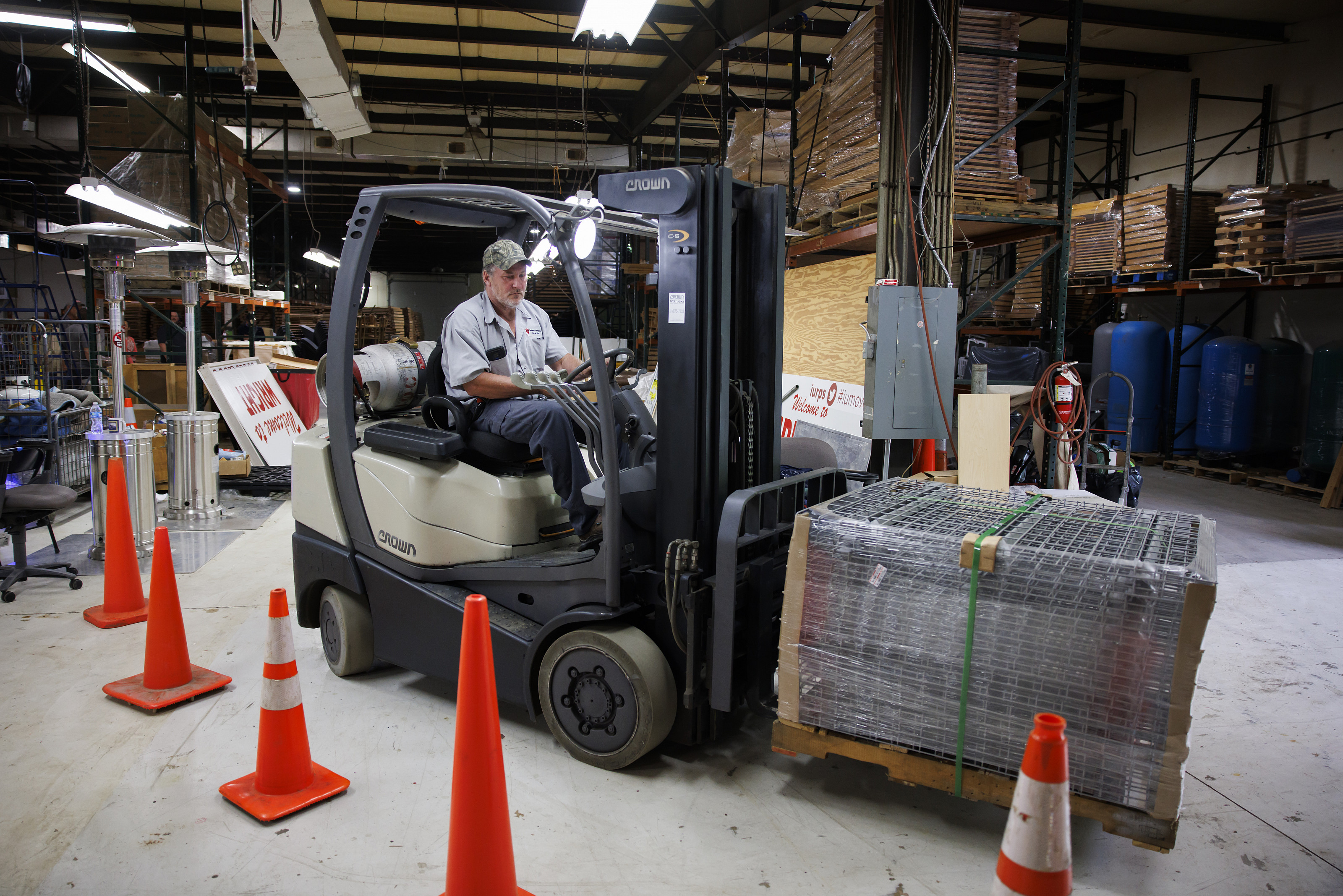Environmental Health and Safety team keeps IU forklift and aerial lift operators safe
By Mary Keck
June 10, 2024

On June 11, National Forklift Safety Day, there’s no better time to highlight the efforts of Indiana University Public Safety’s Environmental Health and Safety team to keep staff safe when operating forklifts and other heavy equipment.
To keep the business of the university moving, heavy loads of food, boxes and other materials need to be lifted and moved using special equipment throughout IU’s campuses. Operating a forklift or an aerial lift isn’t the same as driving a car or truck and requires training to avoid injuries and even fatalities.
“One of our top priorities is to ensure a safe work environment and reduce occupational hazards for all employees,” said Tamara Ratliff-Roberts, Environmental Health and Safety director for Occupational Safety and Hygiene, South Division. “Serious accidents can happen with the type of equipment we’re using, and we want to make sure our staff can operate it safely.”
All IU staff who operate forklifts and aerial lifts are required by the U.S. Occupational Safety and Health Administration to take classroom and hands-on training. Environmental Health and Safety staff provide this essential training to employees across the state to ensure loads are moved and lifted safely and IU remains in compliance with federal and state requirements.

Recently, maintenance staff from Residential Programs and Services underwent training to ensure they could operate forklifts and aerial lifts and properly use fall protection equipment. Among them was Tim Beaty, a mason who works in Housing Operations. He expects to be up in an aerial lift regularly to complete work on building exteriors like repairing window leaks and joints in the stone.
“If you don’t know how to operate the equipment, someone could get seriously injured,” Beaty said.
During the training, staff had to navigate a course, driving around cones, picking up a heavy load on a pallet, setting it down and then bringing it back. They lifted themselves and others up in an aerial lift, and they donned fall-protection harnesses and other gear to learn how to wear it properly.
They also discussed common issues that can occur on the job. Forklifts and aerial lifts can be difficult to drive on an incline, making it easy to tip over. Depending on the size and type of load, visibility can be a challenge on a forklift. That is why it’s important to carry loads low to the ground, stop at intersections and honk the horn to warn others that the forklift is coming through. Aerial lifts should not be operated outdoors in inclement weather.
“With any new skill, it takes time,” Ratliff-Roberts said. “We encourage staff to practice and not go outside of their comfort zone.”
Beaty said the training made him safer.
“It makes you more aware of what the equipment can and cannot do and also makes you aware of your surroundings,” he said.
In addition to Residential Programs and Services, employees from IU Dining, Laboratory Animal Resources, IU Surplus, Radio and Television Services and other departments throughout the university use heavy equipment to complete their work. Forklift, aerial lift and fall protection trainings are some of many Environmental Health and Safety services that keep IU staff safe each day.
Mary Keck is communications manager for IU Public Safety.